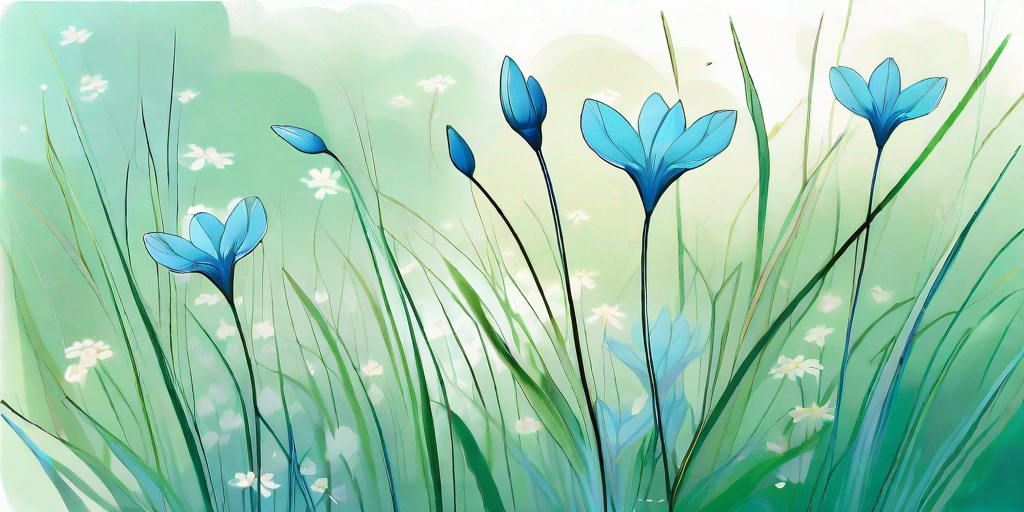
In the world of flora, the bluet flower, also known as Houstonia caerulea, is a hidden gem. This delicate, tiny flower, with its four-parted blue petals and yellow center, is a sight to behold. But don't let its size fool you. The bluet is a powerhouse of beauty, resilience, and charm. So, buckle up, flower enthusiasts! It's time to embark on a journey to discover the hidden beauty of bluets.
The Intriguing History of Bluets
Bluets, despite their delicate appearance, have a rich and intriguing history. Native to North America, these tiny flowers have been gracing the landscapes of this continent for centuries. They were first documented by the renowned botanist André Michaux in the 18th century, who was clearly as smitten with them as we are today.
The bluet's scientific name, Houstonia caerulea, is a tribute to Dr. William Houston, a Scottish surgeon who spent a significant part of his life studying plants in Central America. 'Caerulea', on the other hand, is Latin for 'blue', a fitting descriptor for this azure beauty.
Bluets in Folklore
Bluets also have a place in folklore. In some cultures, they are considered symbols of humility due to their small size and unassuming nature. They are also associated with love and commitment, making them a popular choice for wedding bouquets and decorations.
There's a charming Appalachian legend that tells of a young couple who would meet in a field of bluets. The story goes that even after they passed away, the bluets continued to bloom every year at the same spot, symbolizing their enduring love. Now, isn't that just the sweetest thing you've heard today?
Identifying Bluets
Bluets are a joy to identify, mainly because they're so darn cute. They typically grow to a height of 3 to 6 inches and have a spread of about 1 foot. The flowers themselves are about 0.5 inches in diameter, with four petals that are usually light blue or lavender, though white varieties also exist.
The bluet's leaves are opposite, meaning they grow in pairs along the stem. They are generally oval or lance-shaped, and their edges are smooth. The plant blooms from April to June, transforming fields and meadows into a sea of blue.
Where to Find Bluets
Bluets are found in a variety of habitats, including meadows, open woods, and along roadsides. They prefer well-drained soil and can tolerate both full sun and partial shade. In the wild, you can find them across eastern North America, from Canada to the southern United States.
If you're lucky enough to live in these regions, keep an eye out for these tiny beauties during your next nature walk. Just remember to look down, as they're closer to the ground than you might expect!
How to Grow Bluets
Now that you're head over heels for bluets (and who can blame you?), you might be wondering how to grow them in your own garden. Fear not, for we have the answers!
Firstly, bluets are not fussy plants. They can grow in a variety of soil types, as long as the soil is well-drained. They also prefer slightly acidic soil, so you might want to test your soil's pH before planting.
Planting Bluets
Bluets can be grown from seeds or transplants. If you're starting from seeds, sow them directly into the soil in late fall or early spring. If you're using transplants, plant them in the spring after the risk of frost has passed.
When planting, space the plants about 6 to 12 inches apart to give them room to spread. Water them well after planting, and continue to water regularly, especially during dry periods.
Caring for Bluets
Once established, bluets are relatively low maintenance. They don't require regular fertilizing, but a light application of a balanced fertilizer in the spring can give them a boost.
Bluets are also resistant to most pests and diseases, which is a big plus in the gardening world. However, they can be susceptible to powdery mildew, so keep an eye out for white, powdery spots on the leaves.
Frequently Asked Questions
Are bluets edible?
While bluets are not typically consumed, they are not known to be toxic. However, as with any plant, it's always best to consult a professional before ingesting.
Do bluets attract wildlife?
Yes, bluets are a favorite of many pollinators, including bees and butterflies. They also provide food for some species of moths.
Can bluets be grown in containers?
Absolutely! Bluets are great for container gardening. Just make sure the container has good drainage to prevent waterlogging.
Conclusion
So there you have it, folks! A comprehensive guide to the delightful bluet flower. Whether you're a seasoned botanist or a casual flower enthusiast, we hope this article has sparked a newfound appreciation for this humble, yet enchanting, flower.
Remember, beauty often comes in small packages. And in the case of the bluet, it comes in a tiny, blue, four-petaled package that's sure to leave you breathless. Happy bluet hunting!















